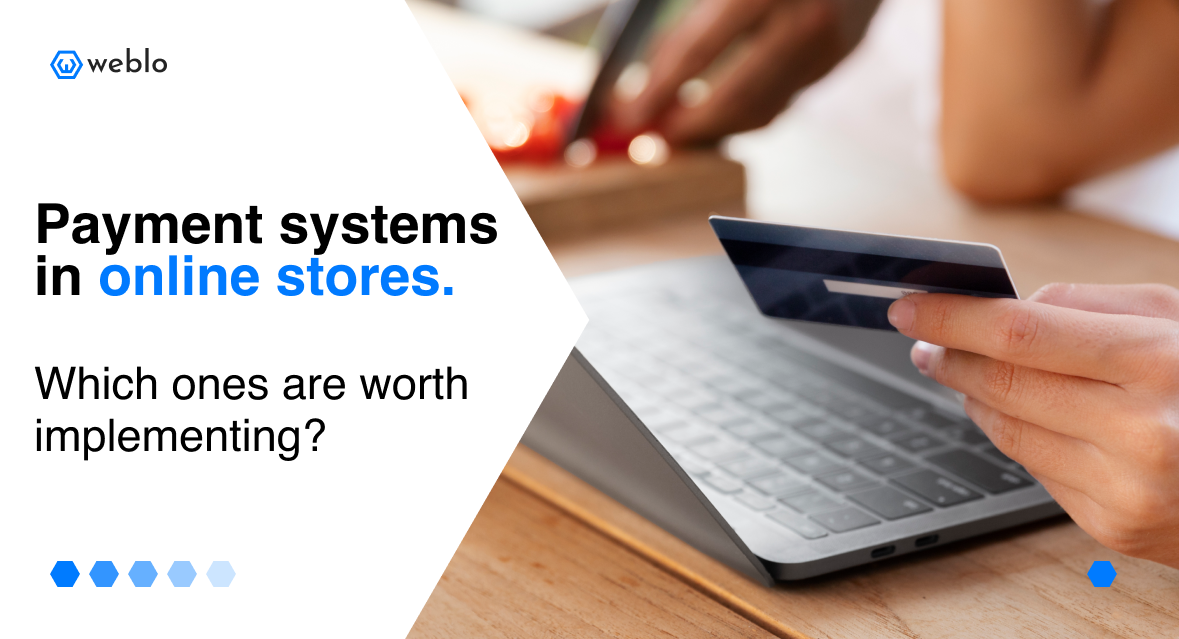Payment systems in online stores – which ones are worth implementing?
Payments in E-commerce – Why Is It So Important?
Payments are a key element of any online store. Their selection not only affects user convenience but also impacts conversion rates and the number of abandoned carts. According to Baymard Institute, as many as 17% of users abandon their purchase if they cannot use their preferred payment method. Moreover, over 50% of consumers globally prefer using digital wallets over traditional credit or debit cards.
Adapting payment methods to customer needs is the key to success in e-commerce. In this article, we will analyze the most popular payment systems, their advantages, and which solutions are worth implementing in your online store.
What Payment Methods Do Customers Prefer?
Based on the Gemius “E-commerce in Poland 2024” report, we can see which payment methods are most frequently chosen by Polish consumers:
BLIK – 68% of users
Instant bank transfers (Pay-By-Link) – 64%
Credit and debit cards – 43%
Deferred payments (Buy Now, Pay Later – BNPL) – 38%
Digital wallets (Apple Pay, Google Pay, PayPal) – 50% globally
What does this mean? The more diverse the payment options in your store, the greater the chance of purchase completion.
The Most Popular Payment Systems in E-commerce
1. BLIK – The Leader of Mobile Payments in Poland
BLIK is currently the most popular payment method in Polish e-commerce. Users generate one-time codes in their banking app and complete transactions instantly.
Security – every payment must be authorized through the bank.
Speed – transactions are processed immediately.
Popularity – 68% of customers choose BLIK for online purchases.
Is it worth implementing BLIK?
Yes, if your business is targeting Polish customers. BLIK is a standard in this market, and customers expect it.
2. Instant Online Bank Transfers (Pay-By-Link)
Instant bank transfers, supported by platforms like Przelewy24, PayU, Tpay, are the second most frequently chosen payment method in Poland.
Funds are transferred to the seller within minutes.
No need to enter card details – the customer is automatically redirected to their bank.
User-friendly experience – customers do not need to manually input transfer details.
Is it worth implementing Pay-By-Link?
Yes, if you want to offer a quick and easy payment solution without requiring cards.
3. Credit and Debit Cards – A Classic That Still Works
Payments via VISA, Mastercard, or American Express are widely accepted worldwide.
Ideal for international customers – especially for global e-commerce businesses.
Recurring payments – perfect for subscription-based models.
Advanced security – support for 3D Secure and tokenization of transactions.
Is it worth implementing card payments?
Yes, especially if you sell internationally or operate on a subscription model.
4. Digital Wallets – Apple Pay, Google Pay, PayPal
Digital wallets are gaining popularity, particularly among mobile users.
Fast transactions – just one click to pay.
Enhanced security – card details are not shared with the merchant.
Easy to use on mobile devices – as more people shop via smartphones.
Is it worth implementing digital wallets?
Yes, if you want to improve the mobile shopping experience and increase conversion rates.
5. Deferred Payments (Buy Now, Pay Later – BNPL)
BNPL systems, such as PayPo, Klarna, Twisto, allow customers to make purchases and pay later.
Increases shopping cart value – customers tend to spend more when they can pay later.
Reduces cart abandonment – deferred payment options encourage customers to finalize their purchase.
Flexibility for customers – they can receive the product before making a payment.
Is it worth implementing BNPL?
Yes, especially if you sell higher-value products (electronics, fashion, furniture, etc.).
How to Choose the Best Payment System for Your E-commerce?
Match payment methods to your target audience – in Poland, BLIK and instant transfers are a must, but if you sell globally, consider credit cards and digital wallets.
Analyze transaction costs – each system has different processing fees, so it’s essential to choose the most cost-effective option for your business.
Ensure security – select providers with PCI DSS certification and advanced fraud protection mechanisms.
Simplify mobile purchases – as more users shop via smartphones, implementing Apple Pay and Google Pay is crucial.




